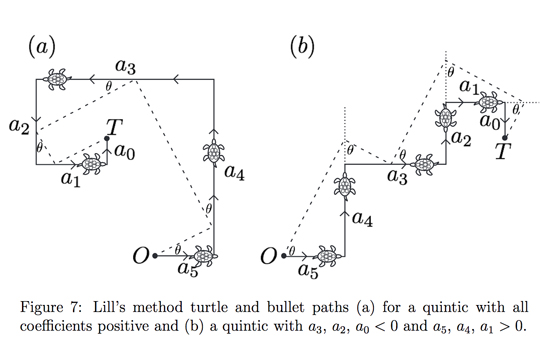Here is an interesting result published by Maxfield in 1970 [1] that I think would be suitable.
Given any positive integer $n,$ there exists a positive integer $N$ (indeed, for each $n$ there exist infinitely many such integers $N)$ such that the decimal digits of $N!$ begin with all the decimal digits of $n,$ in their correct order. For example, there exists an integer $N$ such that the decimal digits of $N!$ begin with the digits $314159265358979.$ According to Southard [2], the smallest values of $N$ for $n = 9$ and $n = 841$ are $N = 96$ and $N = 12745.$
To prove this result, Maxfield proves that the sequence whose terms are given by the fractional parts of $\log_{10} N!$ is dense in the interval $[0, 1],$ from which the desired result follows. Maxfield’s brief argument of how this desired result follows from the density condition was not entirely clear to me, but when I was reading through this paper about 10 years ago I managed to come up with a detailed proof for my personal notes.
Maxfield also proves (last 2 pages) that the sequence whose terms are given by the fractional parts of $\log_{10} \log_{10} N!!,$ and the sequence whose terms are given by the fractional parts of $\log_{10} \log_{10} \log_{10} N!!!,$ and so on (each finite iterate of the $\log_{10}$ function is evaluated at the same finite iterate of the factorial function) are each dense in the interval $[0, 1].$ Maxfield does not indicate any implications of this more general result, but one can show that it implies certain higher order decimal digit properties of iterated factorials. For example, note that each positive integer $m$ can be written as $10^{m^{*} \times 10^k},$ where $1 \leq m^{*} < 10$ and $k$ is an integer (e.g. $6 = 10^{7.778 \ldots \times 10^{-1}}$ and $2^{1000} = 10^{3.01 \ldots \times 10^2}).$ You can think of $m^{*}$ as a second order mantissa for the number $m.$ Now note that the fractional part of $\log_{10} \log_{10} m$ is equal to the fractional part of $\log_{10} m^{*},$ which is equal to $\log_{10} m^{*}.$ Maxfield’s density result for $N!!$ implies that for each positive integer $n,$ there exists a positive integer $N$ such that
$$ 10^{\log_{10} \log_{10} n} \leq 10^{\log_{10} \log_{10} (N!!)} < 10^{\log_{10} \log_{10} (n+1)} $$
It follows that given any positive integer $n,$ there exists an integer $N$ such that $n^{*} \leq (N!!)^{*} < (n+1)^{*},$ and hence the decimal digits of the number of trailing zeros of $N!!$ begin with all the decimal digits of $n,$ in their correct order. And there are higher order versions involving $N!!!$ and $N!!!!$ and so on.
Note: Although $N!$ ends with one or more trailing zeros for each $N \geq 5,$ not every positive integer can be the number of trailing zeros for $N!\,.$ For example, $24!$ has $4$ trailing zeros and $25!$ has $6$ trailing zeros, so $5$ is not a possible number of trailing zeros for $N!\,.$ Also, it is not difficult to see that the gaps can be arbitrarily large, as suggested by the fact that $(5^{300})!$ has $299$ more trailing zeros than $(5^{300} – 1)!\,.$
[1] John Edward Maxfield, A note on $N!$, Mathematics Magazine 43 #2 (March 1970), 64-67.
[2] Laura Southard, Investigations on Maxfields theorem, Pi Mu Epsilon Journal 7 #8 (Spring 1983), 493-495.
(ADDED NEXT DAY) What follows are some additional related results that I came across after I went through some of my things at home.
Theorems 1 and 3 on p. 74 of Diaconis [3] strengthen Maxfield’s result about the sequence of fractional parts of $\log_{10} N!$ by showing this sequence is actually uniformly distributed in $[0,1].$ Note that saying this sequence is dense in $[0,1]$ means that each subinterval (of positive length) of $[0,1]$ gets visited by some term (in fact, by infinitely many terms) of the sequence. On the other hand, saying this sequence is uniformly distributed in $[0,1]$ means that for each subinterval $I$ of $[0,1],$ the limiting relative frequency of the number of terms that visit $I$ (i.e. that belong to $I)$ is equal to length of $I.$ Intuitively, this means the terms of the sequence don’t accumulate at any given location faster than at any other location. Diaconis [3] is probably not suitable for careful reading by undergraduates (and it is longer than 6 pages), but the statements of some of its results and its discussions of related literature would be suitable.
A related result was proved in Moser/Macon [4], which is also a paper I think would be suitable for undergraduates to read. A summary of some of the results in [4] is given in my sci.math post cited below.
Although one might consider these “first digits” results as a recreational mathematics topic, they are related to Benford’s Law, something Diaconis [3] discusses. Regarding Benford’s Law, see A Bibliography of Publications about Benford’s Law, Heaps’ Law, and Zipf’s Law by Nelson H. F. Beebe and a google search for “Benford’s law” + “distribution of leading digits and uniform distribution”.
[3] Persi Warren Diaconis, The distribution of leading digits and uniform distribution mod 1, Annals of Probability 5 #1 (February 1977), 72-81.
[4] Leo Moser and Nathaniel Macon, On the distribution of first digits of powers, Scripta Mathematica 16 (1950), 290-292.
See also Abstract #5 on p. 520 in American Mathematical Monthly 58 #7 (August-September 1951) AND these papers AND my comments in this 26 September 2006 sci.math post.

